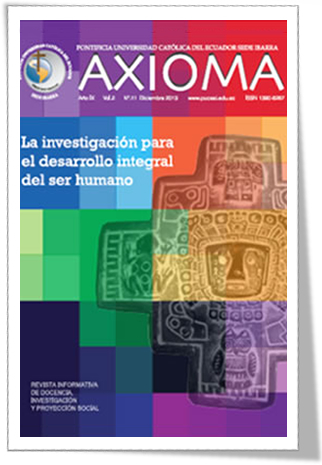Analysis by scanning electron microscope suction of waterproof extruded facebrick manufacturing
Main Article Content
Abstract
This study examines the alteration that occurs in the porous ceramic manufacturing extruded face side, being surface treated with water repellent products, suction studying porous ceramic, based on the variation from the waterproofed ceramic, two pa-rameters: initial absorption rate and surface water level. To quantify the degree of disturbance which occurs every repellent on the surface of the porous ceramic, is imaged with a scanning electron microscope (SEM) at 3,000 magnifications, can be seen how it affects the degree of surface damage to the results suction in ceramics. Is selected extruded pottery manufacturing. Wa-ter repellents products are selected based on their chemical composition in six classes in monocomponent and bicomponent.The methodology used is based on the UNE-EN 772-11:2001 Standard “Initial rate of water absoroption”, noting that all the water repellent products reduce the initial absorption rate and surface water level parameters of the porous face cera-mic, compared to the non-treated ceramic. The ceramic surface is analyzed by image comparison between ceramic not been waterproofed and treated with different products, obtained by SEM. All water repellent products reduce parameters initial absorption rate and surface water level of the porous ceramic face side, on waterproofed ceramic without altering the ceramic surface to a greater or lesser degree, depending on the composition of water repellent product applied .
Downloads
Article Details
Con la finalidad de contar con un tipo de licencia más abierta en el espectro que ofrece Creative Commons, a partir de diciembre de 2022 desde el número 27, AXIOMA asume la Licencia Creative Commons 4.0 de Reconocimiento-NoComercial-CompartirIgual 4.0(CC BY-NC-SA 4.0). Tanto el sitio web como los artículos en sus diferentes formatos, reflejan esta información.
![]()
Hasta el mes de noviembre de 2022 con el número 26, la revista AXIOMA asumió una Licencia Creative Commons Atribución-NoComercial-SinDerivadas 4.0 Internacional (CC BY-NC-ND 4.0). Los artículos contenidos en cada número hasta el 26, cuentan con esta licencia y su descripción se conserva en el portal de nuestra revista.
Atribución-NoComercial-SinDerivadas
CC BY-NC-ND
AXIOMA- Revista Científica de Investigación, Docencia y Proyección Social
References
Coronado Martín, J. A. (2012). Influencia de los productos hidrofugantes en las propiedades superficiales de las cerámicas porosas utilizadas en cerramientos exteriores cara vista. Tesis doctoral. Departamento de Construcción y Tecnología Arquitectónicas. E.T.S. Arquitectura. Universidad Politécnica de Madrid.
Coronado Martín, J. A. & García Santos, A. (2011). La influencia de los productos hidrofugantes en las modificaciones cromáticas del ladrillo cerámico. Materiales de construcción. ISSN 0465-2746, vol. 61. Nº 304. Págs. 597-611. Octubre/noviembre/diciembre 2011. CSIC.
------------------------------------------------- (2010). The influence of water repellent products on the chromatic modifications of the ceramic brick. 37º IAHS Word Congress on Housing Science. “Desing, Technology, Refurbishment and management of Buildings”. Santander, España, 26-29 Octubre 2010. Code 173, pag. 109. ISBN: 978-84-693-6655-4
Coronado Martín, J. A., García Santos, A. & Adell Argilés, J. M. (2010). The influence of water repellent products on the chromatic modifications of the ceramic brick. 8th International Masonry Conference. Dresde, Alemania, 4-7 Julio 2010. ISBN: 978-3-00-0313881-3.
Coronado Martín, J. A., García Santos, A. & Padial Molina, J. F. (2013). La Influencia de los Productos Hidrofugantes en la Succión del Ladrillo Cerámico Cara Vista. Boletín de la Sociedad Española de Cerámica y Vidrio. ISSN 0366-3175. Vol. 52. nº 4, 2013 (julio/agosto). Págs. XV-XVIII.
Fort, R. (2007). Polímeros sintéticos para la conservación de materiales pétreos. Ciencia, Tecnología y Sociedad para una conservación sostenible del patrimonio pétreo. Pérez-Monserrat, E.M., Gómez-Heras, M. Álva-rez de Buergo, M., Fort, R. (eds). Dpto. Publicaciones Universidad Popular José Hierro, San Sebastián de los Reyes. 71-82. ISBN: 84-95710-41-2.
García Santos, A. (2001). Los Plásticos en la Construcción I y II. Madrid. Cuadernos del Instituto Juan Herrera, Escuela Técnica Superior de Arquitectura, pp 27-42
García Santos, A. & Conci Rinaudo, M. (2005). Variación del color del soporte cerámico tratado con pintura antigraffiti. Materiales de Construcción, vol. 55. nº 278 (abril/mayo/junio 2005), CSIC, pp. 55-68
Norma UNE-EN 772-11:2001 (2001). Métodos de ensayo de piezas para fábrica de albañilería. Parte 11: Determinación de la absorción de agua por capilaridad de piezas para fábrica de albañilería, en hormigón, piedra natural y artificial, y de la tasa de absorción de agua inicial de las piezas de arcilla cocida para fábrica de albañilería
Norma UNE 67027-84 (1984). Ladrillos de arcilla cocida. Determinación de la absorción de agua.
Wacker-chemie Gmbh. (1973). Procedimiento para hidrofugar superficies de materiales de construcción. Patente de invención.

